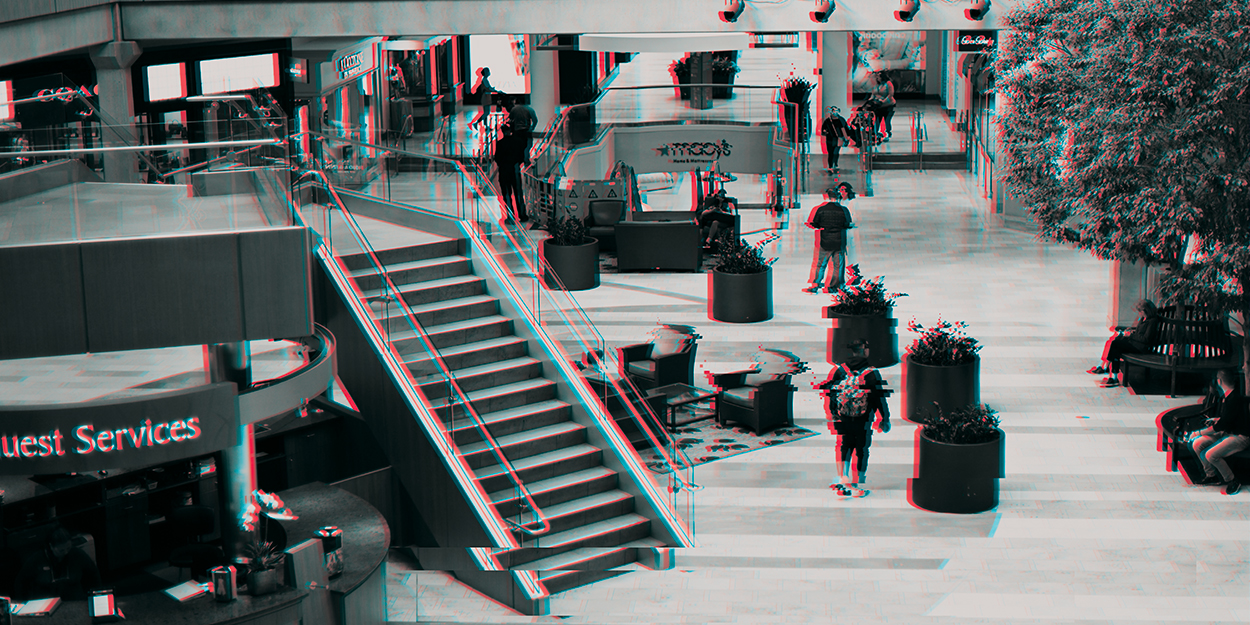Those '90s teen flicks just wouldn’t be the same without them. How else would a guy get a chance to flirt with his crush if not across a checkout counter in the food court? Where else would a girl fight over a high-fashion jacket with her sworn nemesis? Malls were the major stages where everyday scenes were set.
Today, they no longer are; at least, not off-screen. A drastic decline in foot traffic at malls has led to department stores closing down across the U.S. RIT students don’t have to look far for evidence of this — Marketplace Mall, only a few blocks away from our Henrietta campus, has seen several of its stores close down. The once-booming mall industry is now nearing its curtain call.
The End of an Era
More than just a collection of stores and restaurants, malls were once a community center. Of course, everyone was shopping, but they were also meeting with friends and neighbors to catch up.
“[During the 1980s], shopping malls had become the meeting place for America's youth, as teens of every different stripe milled about the food courts, smoked cigarettes, and went from chain store to chain store in search of temporary employment,” according to Business Insider.
Along with the chatting friend groups and job-seeking teens, there were throngs of people visiting department stores that we rarely hear about or see open today.
As malls received fewer and fewer visits, many stores were left little choice — either declare bankruptcy or close several stores nationwide to help stay afloat. Stores forced to make such decisions include Payless ShoeSource, Sears, Kmart and Macy’s. When major mall anchors like Sears and Macy’s disappear, even fewer shoppers go to the malls. This means fewer customers for the smaller in-between businesses, like nail salons or that nice man who sells bedazzled phone cases.
"This means fewer customers for the smaller in-between businesses, like nail salons or that nice man who sells bedazzled phone cases."
Fierce Competition
Malls mostly have the internet to blame. Credit Suisse, a reputable Swiss wealth management company, notes that store closings have accelerated and estimates that online sales will make up 40 percent of all soft goods by 2030. The inverse relationship between mall failures and online store success stories isn’t coincidental.
“I think certainly the competition with what online shopping is able to provide puts a lot of pressure on brick and mortar establishments and maybe especially malls,” said Jeffrey Wagner, an Economics professor at RIT. “So, I think the value of people’s time has changed ... Then also people seem to enjoy fixing things and figuring out [products] for themselves. And then the big online stores are able to do such volume that really reduces the cost.”
So, the convenience of online shopping has attracted American consumers. This isn’t surprising. Our fast-paced lives seem to demand the 24/7 store hours that malls don’t have. Shopping malls also don’t offer a handy search bar with filters for clothing type, color and price ranges.
In the end, people are going to prefer buying discounted products from the comfort of their couch. That almost always beats a trip to the store where you have to search through racks of clothing only to pay the high retail price.
Shopping at a mall has become inefficient and going there to hang out with friends is no longer the trend. This could mean the death of the mall industry. But it doesn’t have to be.
The Bounce Back?
Mall owners are still fighting to keep their business alive. Some have adjusted to become more of a destination than a shopping center. That is, they’ve brought in entertaining businesses like Dave and Buster’s, movie theaters, small theme parks or even high-end restaurants. Wagner believes that this shift in the mall industry is necessary for it to continue.
“They’ve got to be part of a theme park, or it’s got to become a destination. Just coming to buy goods and services is not gonna make it,” he said.
"Just coming to buy goods and services is not gonna make it."
It seems that mall owners are starting to recognize this new issue. According to Business Insider, some malls have introduced medical centers, gyms, car dealerships, art galleries or even libraries among their regular retail stores. This helps to increase foot traffic again which means that stores can confidently continue paying their leases. Wagner agrees with these kinds of additions.
“Add some rides there for kids, add an educational component and then you have these government services right there so when people need to get their license plates renewed, it’s at the mall," said Wagner. "I think it would do some good for society to pull people back into these common areas again.”
As shopping centers transform to meet the changing needs of American consumers, maybe they’ll return to their golden years when they were important community spaces. Then the isolating effects of the internet might be combated by the sense of togetherness that the malls will create. We can only imagine how the industry will look in the next decade, or if it will even still exist. For now, we can still enjoy a quiet walk through the stores still open at our local mall.








